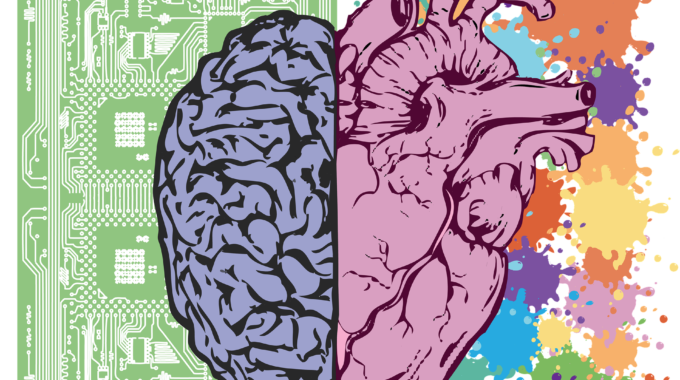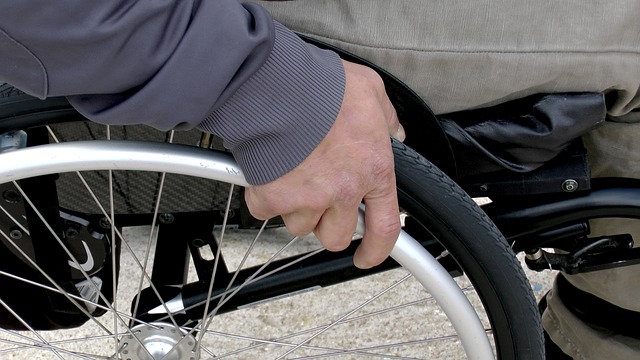Myth: Trickle Down Economics Works Since the days of Ronald Reagan, many have promoted the…

Implicit Bias Part Two: Tips and Best Practices
Implicit Bias: Part Two
 This is part two of a blog post series, you can read part one here.
This is part two of a blog post series, you can read part one here.
Implicit bias is a neurological reality of being human. While it is uncomfortable and difficult to address, the fact that bias exists in everyone’s unconscious is a good base to understand, unpack and address biases in the workplace.
Now that implicit bias, and its impact on the work environment, has been contextualized: what’s next? How can you address implicit bias in the most effective way?
Addressing Implicit Bias: Tips and Best Practices
Framing the beginning conversation is a great first step. Since implicit bias is a part of the brain’s wiring, it is not something with which to demonize your team. While bias, even toxic behaviors, must be addressed, beginning a conversation in the affirmative manner can help set a better tone. Rather than lecturing on why implicit bias is bad, or placing blame: think of this as an opportunity.
What are your company’s goals in the next year? Five years? Ten years? How can, or how could, having more gender-balanced teams – for example – help the company reach those goals?
Frame DEI conversations around goals – not punishments
As conversations around implicit bias training are proposed, this framing around goals, rather than punishments, will not only help leaders invest in the initiative, but provide a more open, safe training space for those diving into the discomfort of implicit bias. Think of this work as affirmative: leading rather than pushing. 12 To take lead from Professor Gino at the Harvard Business School:
the idea is to create an ‘organizational conversation’ about biases and help spark ideas on ‘steps the organization can take to minimize them.’” 13
Noticing and working to minimize implicit bias in the workplace happens on many levels. By consciously and openly discussing biases, shifts can occur as a result: in the individual, one’s own self-awareness, the hiring process, the standard training of team members, and – ideally – the culture of the entire organization.
Understand language is an effective but oppressive tool
After this beginning conversation is established, the work continues. Everyday use of language can show potential implicit biases as well. Language is an effective, but also oppressive tool. It is vital to be aware of the different access people have to language based on background.
All speakers of a language are influenced by the dynamics of dominant and subordinated group membership. If you are a white heterosexual man, your experience of language will be different from a black woman or a gay Asian man.” 14
Language is tied to the histories of people and, therefore, privilege and a different understanding of language is bound to come up. Therefore, intentional word choice and accessible language is vital when discussing and working through implicit bias. Words can even have gendered connotations, which as Professor Bohnet of Harvard Kennedy School, points out can be a downfall.
Use gender neutral language for a stronger applicant pool
Not only is gender-equitable or gender-neutral language crucial in the work environment itself, but specific language choices in job descriptions can change your applicant pool.
Words such as “efficient” or “strong” versus “collaborative” will affect the number of women, typically, who would apply for a position. 15 It can be helpful, when addressing gender biases in the workplace to examine word use in everyday communications. Seeing how biases can affect even minute choices can help one understand its deeply ingrained, even if subtle, impact.
The Impact of Bias: Laura’s Story
Laura Gómez’s journey to becoming one of leading voices of immigration, tech and workforce diversity is a beautiful one that teaches aspiring entrepreneurs the importance of the goal-oriented, altruistically driven hard work. Laura’s struggle began as an undocumented immigrant from Mexico when she moved to the US at the age of 10, during an international amnesty program. A victim of regular racial stereotyping, she was often an outsider, even though she grew up in liberal parts of Redwood City.
Having worked at HP at the age of 17, before even going to college, Laura was advised to attend the Department of Electrical Engineering and Computer Sciences (EECS) at Berkeley (CA). However, her desire to create change for women, as well as the feeling of being one of the only women in an overwhelming crowd of male computer science students drove Laura to pivot. She pursued Sociology, Latin American Studies and Development Studies at undergraduate and graduate levels. 16
Create Standard Measures for the Hiring Process
On an organizational level, there are practical implementations that can be made to address common workplace biases. As Prof. Bohnet suggests in the hiring process, “think broadly about ways to broaden and standardize the process.” 17
What’s in a name? Discrimination.
A male job applicant was sending out 50-100 resumes a day to jobs he felt he was qualified for. Despite the large amount of resumes he was sending out daily, he did not receive any callbacks or responses. He decided to make just one, seemingly small, yet highly significant change. He dropped one letter of his first name, from José to Joe. The results were startling – a week later his inbox was full. 18
By creating a standard measure for processes of hiring, the inclination for biases is significantly lowered. Blind resume reviews, work sample tests and standardized interview questions are some small changes that can help in the standardization of that process. Organizations can increase awareness of the subtle ways unconscious biases impact their hiring and talent management processes. The hiring is where it begins; the more difficult challenge is to create an inclusive culture that embraces differences and retains the talent in the organization.
Using AI to try and Bypass Bias
Laura ended up working at Twitter during its early stages, quickly climbing the ladder from an International Lead Support to the Head of Localization. As a founding member of Twitter’s international team, she could lead product development into 50+ languages in dozens of countries. Having contributed a similar experience at Jawbone, she was able to get a first-hand view of gender and ethnicity issues in the tech world. She decided it was time to work on her own venture – this is what gave birth to Atipica.
Atipica is a talent discovery engine that uniquely combines AI (artificial intelligence) with human intelligence to allow companies to discover the value of the talent they’re hiring, based on recruiting data. Its mission, perhaps driven directly by Laura’s experiences of being outcast, is to “surface the unique person behind the resume by interpreting data through an empathetic lens.” 19
Making the Unconscious Conscious
 While there are important organizational ways to address bias through training and standardization, addressing implicit bias long-term can also create a shift in the culture of the workplace. As Steve Simpson writes, addressing implicit bias “is less about work activities, strategies and initiatives, and more about the behaviors that people display in their day-to-day work in the many and various interactions at play.” 20
While there are important organizational ways to address bias through training and standardization, addressing implicit bias long-term can also create a shift in the culture of the workplace. As Steve Simpson writes, addressing implicit bias “is less about work activities, strategies and initiatives, and more about the behaviors that people display in their day-to-day work in the many and various interactions at play.” 20
How can an organization help individuals make the unconscious, conscious?
One strategy for organizations is to provide training and opportunities to make unfamiliar differences more familiar. We need strong workplace relationships to build trust. The brain unconsciously registers differences that are unfamiliar or uncomfortable as a potential threat, making it more difficult to build trust and rapport. Providing opportunities to engage across differences in ways that are positive increase our understanding of differences and helps build trust. Sharing stories can help engage across differences and open the communication.
How can individuals notice and manage unconscious biases effectively?
Engage the higher brain to demonstrate inclusive behaviors
Neuroscience tells us that one must engage the prefrontal cortex, or higher brain. This part of the brain helps one connect current actions to future consequences (providing conscience). It helps one determine both similarities and differences between people, things or events. Therefore, this “higher brain” plays a critical role in one’s ability to demonstrate inclusive behaviors consistently.
The higher brain is where one can:
- Think about one’s thinking
- Increase and maintain high levels of self-awareness
- Recognize biases to manage and consciously re-pattern them
- Understand the impact of one’s behavior on others
- Engage empathy, curiosity and understanding
- Create connections with others that are outside of one’s comfort zone. 21
The higher brain is vital in being inclusive, in noticing and managing unconscious bias. Yet the higher brain also contains a central challenge – it becomes destabilized very easily, often outside of conscious awareness. Stress, pressure, urgency, negative emotions and strong reactions can all destabilize the higher brain, and when this happens, lower brain states dominate thinking and perceptions. 22 One becomes less aware of biases and is even more likely to act on them unconsciously.
The good news is that individuals can learn to recognize when stress takes over and the higher brain is destabilized – essentially gone offline. What are some of the things we can do to consciously re-engage the higher brain?
Here are a few skills and techniques:
 Know yourself and your reactions. Learn to recognize when the higher brain has gone offline and lower brain states have taken over. There are physiological cues that are indicators that lower brain reactions are taking over, such as:
Know yourself and your reactions. Learn to recognize when the higher brain has gone offline and lower brain states have taken over. There are physiological cues that are indicators that lower brain reactions are taking over, such as:
- Changes in heart rate
- Breathing quickens
- Body temperature rises
- Muscles tense
- Jaw clenches or tightens.
Here are some suggestions to get the higher brain back on line:
- Pause and begin slow deep breaths to calm the body’s physiology. This will help the muscles relax, increase oxygen flow and slow down lower brain reactions.
- Reflect on positive feelings from the past; recall and focus on positive situations which will help stabilize the higher brain and help regain conscious control.
- Engage short term memory by focusing on a specific routine task. Short term memory is associated with the higher brain; taking a moment to focus on a task can help facilitate a shift back to the higher brain. 23
That sounds easy enough, but it’s rather complex to manage. Commit to monitoring personal reactions to situations for one week. Use the worksheet provided in the appendix. Individuals can learn to be more self-aware in moments of stress, where it’s natural for biases to kick in and override more conscious reactions. Notice the stressful moments where the biased “flight, fight or freeze” response automatically takes over. It is your unconscious, but you do not lack control.
Try this process:
- Take three slow deep breaths – focusing on relaxing your muscles. Talk yourself through the moment: is this a threatening moment or is that just habit?
- Stop and take a moment to do a simple focused task.
- Engage your short-term memory and recall a positive situation. Again, this will help the brain get out of the deeper “recording” causing the stress reaction and get to the “higher brain state” where you can consciously choose your response. 24
- Reflect – when the stress has passes, remember to intentionally reflect on where that feeling came from and how to address it more proactively in the future. This will help you re-write the internal recording and choose a new response path.
Manage bias through intentional personal practice
If you can learn to recognize it, it is no longer unconscious; you can ask why are you reacting that way and then choose your response. Through intentional personal practice, these biases can be easily understood and managed. These personal adjustments can provide examples and stories for more meaningful dialogue about how to be inclusive in the workplace. By embracing the discomfort of unlearning and relearning through implicit biases, others can become more open to the opportunity to relearn, rather than seeing this process as a burden. 25
Today’s neuroscience research provides more information about unconscious brain dynamics that feed into biases and assumptions. We know more now about how to positively influence the unconscious, take more control over our actions and shape a more inclusive work culture. By applying one specific technique – showing sincere appreciation – it helps keep the brain tipped toward open-mindedness and curiosity which directly supports the ability to engage with others across differences more effectively.
Micro-affirmations for Sincere Appreciation
How do we show more sincere appreciation? Micro-affirmations are one example of an everyday practice to build habits of appreciation that can aid in shifting workplace culture. As Mary P. Rowe, Ph.D., Adjunct Professor at MIT Sloan School of Management says, micro-affirmations “are tiny acts of opening doors to opportunity, gestures of inclusion and caring, and graceful acts of listening.” 26
These gestures can take many forms:
- Mentoring a young team member who may have been overlooked in the past
- Asking for (and being open to) feedback after a meeting from the larger group
- Being open to conversations that once may have seemed too “difficult” or “intimidating” to have
- Thanking a team member for a very specific behavior that you now notice and may have overlooked before.
Becoming more familiar with differences that are unfamiliar is a positive and powerful way to reduce unconscious bias and create positive associations in the brain. This primes the brain to see someone’s difference in a more positive light, and makes it easier for the brain to extend care, compassion and kindness across differences. It increases understanding of others and recognition of shared interests, needs and outcomes. 27
Addressing Implicit Bias Requires Desire to Change
Addressing implicit bias is far more than standardizing processes in organizations. Addressing implicit bias requires a desire to make individual behavior change…to improve the outcome.
Addressing implicit bias can create a positive shift in the workplace culture. While being open to feedback or facilitating conversations around biases is a difficult undertaking, it creates a collective self-awareness in the workplace that is vital to effectively shift collective cultural practices.
While questioning one’s own behavior or acknowledging potential unintended consequences to actions is challenging and can cause discomfort – that is the core of culture change. 28 This is vital to unlearning implicit biases and will help create a sustainable shift in the workplace, affecting efficiency and increasing potentiality long-term. Exploring intentional re-programming and implementing small shifts in individual behavior can bring long-term organizational change and new opportunities to the workplace.
Read More About Unconscious and Implicit Bias
We invite you to learn more about the types of bias which exist, and how it can be measured and read more of our blog posts on bias. You can also sign up for our mailing list, and follow us on LinkedIn.
Footnotes
- 12 “Proven Strategies for Addressing Unconscious Bias in the Workplace.” CDO Insights: Diversity Best Practices 2.5, pg. 9
- 13 Wittenberg-Cox, Avivah. “Tackle Bias in Your Company Without Making People Defensive.” Harvard Business Review, pg. 2
- 14 “Proven Strategies for Addressing Unconscious Bias in the Workplace.” CDO Insights: Diversity Best Practices 2.5, pg. 4
- 15 Wittenberg-Cox, Avivah. “Tackle Bias in Your Company Without Making People Defensive.” Harvard Business Review, pg. 2
- 16 Hirani, Saad. “Laura Gómez – The Mission to Eliminate Bias,” Sutardja Center for Entrepreneurship & Technology, Oct 26, 2016
- 17 Wittenberg-Cox, Avivah. “Tackle Bias in Your Company Without Making People Defensive.” Harvard Business Review, pg. 2
- 18 Matthews, Cate. “He Dropped One Letter in His Name While Applying for Jobs, And the Responses Rolled In,” Huffington Post Latino Voices
- 19 Hirani, Saad. “Laura Gómez – The Mission to Eliminate Bias,” Sutardja Center for Entrepreneurship & Technology, Oct 26, 2016
- 20 Simpson, Steve. “Three Conditions Necessary for a Stand-out Culture – Part 1.” Cultural Intelligence, pg. 1
- 21 Casey, Mary E., and Shannon Murphy Robinson. Neuroscience of Inclusion: New Skills for New Times, pg. 15
- 22 ibid, pg. 62
- 23 ibid, pg. 83
- 24 ibid, pg. 62
- 25 “Proven Strategies for Addressing Unconscious Bias in the Workplace.” CDO Insights: Diversity Best Practices 2.5, pg. 4
- 26 ibid, pg. 9
- 27 Casey, Mary E., and Shannon Murphy Robinson. Neuroscience of Inclusion: New Skills for New Times, pg. 46
- 28 Simpson, Steve. “Three Conditions Necessary for a Stand-out Culture – Part 1.” Cultural Intelligence, pg. 2



